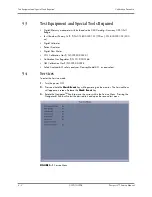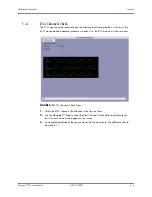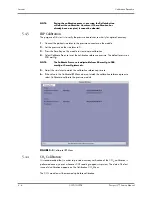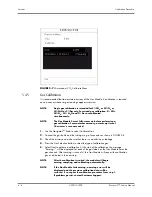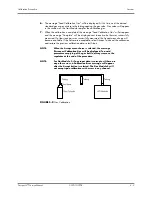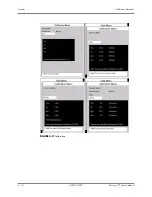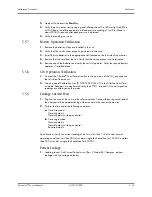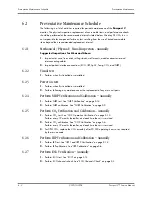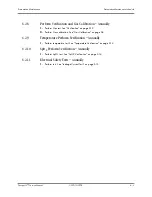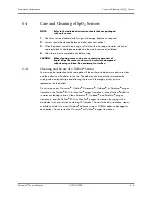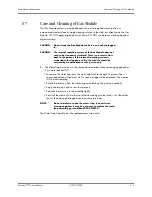
5 - 15
Calibration Procedure
Verification
2.
Apply cuff and press the
Start
key.
3.
Verify the pump motor starts pumping and inflating the cuff to 180 mmHg (Adult).The
cuff will begin to deflate and obtain a blood pressure reading of Sys/Dia/Mean in
about 20 to 30 seconds after peak pressure is obtained.
4.
Verify the reading on screen.
5.5.7
Battery Operation Verification
1.
Remove the batteries if they are installed in the unit.
2.
Verify that the unit functions properly, powered via line cord.
3.
Install the two batteries in the appropriate slots located on the left side of the monitor.
4.
Remove the line cord from the unit. Verify that the unit operation is not interrupted.
5.
Remove one of the batteries and verify the unit still operates. Verify the second battery
operates, if installed alone.
5.5.8
CO
2
Operation Verification
1.
Connect the FilterLine
®
Short Term assembly to the input port of the CO
2
connector on
the left side of the monitor.
2.
Attach a can of Calibration Gas (P/N 0075-00-0033-01) to the Filterline Short Term
assembly. Feed gas into monitor and verify the ETCO
2
, Inspired CO
2
and respiration
readings are displayed on the screen.
5.5.9
Leakage Current Tests
1.
Plug the line cord of the unit into the safety analyzer. Connect the case ground lead of
the analyzer to the equipotential lug of the monitor on the rear of the monitor.
2.
Perform the tests under the following conditions:
a.
Case Grounded:
Normal polarity
Normal polarity with open neutral
b.
Case ungrounded:
Normal polarity
Normal polarity with open neutral
Reverse polarity
Specifications: Verify the current reading of the test is less than 100 µA under normal
operating conditions Less than 300 µA under a single fault condition for 120 VAC and less
than 500 µA under a single fault condition for 230 VAC
Patient Leakage
1.
Lead to ground: Sink Current Patient circuit (Test V, Model 431 Dempsey; patient
leakage with line voltage on leads).


